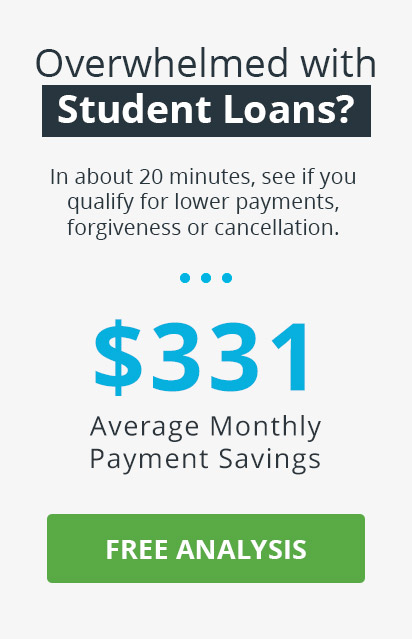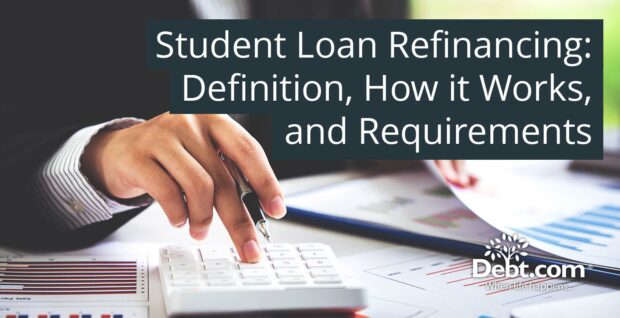
Student loan consolidation vs refinancing highlights two distinct methods for managing student loans, each with unique perks and drawbacks. Consolidation combine numerous federal student loans into one direct consolidation loan through the federal government. The process simplifies repayment by merging various loans into one, making it easier to manage with a single monthly payment. The interest rate for consolidation is a weighted average of the existing loans’ rates, rounded up to the nearest one-eighth of a percent. The interest rate does not go down when the borrower consolidates their loans, and they still get the benefits of federal loans, like income-based repayment plans, loan forgiveness programs, and options to delay or stop payments.
Consolidation is beneficial for retaining federal protections and simplifying repayment. Refinancing involves obtaining a new loan from a private lender to pay off existing federal and/or private student loans. Refinancing results in a lower interest rate for borrowers with solid credit scores and stable incomes, bringing substantial savings over the loan’s lifespan. Refinancing federal loans with a private lender results in the loss of federal benefits, such as income-driven repayment plans and loan forgiveness programs. It is ideal for reducing interest rates and monthly payments, provided the borrower forgoes federal protections.
Consider financial goals, credit profile, and the importance of federal loan benefits when deciding whether to “consolidate vs refinance.” Decisions between “loan consolidation vs loan refinancing” must be based on whether it is more important to simplify payments and retain federal benefits or to lower the interest rate and monthly payments through refinancing. Understanding The distinctions between “student loan consolidation vs refinancing” and evaluating specific financial situations helps choose whether to consolidate or refinance student loans.
Table of Contents
What is Student Loan Consolidation?
Student loan consolidation merges several federal student loans into a one-time loan with a fixed interest rate. Student loan consolidation makes repayment simpler by creating a single monthly payment instead of multiple, making it easier to manage and avoid missed payments.
Borrowers extend the repayment term to 30 years and reduce the monthly payment amount. Increasing the duration increases the total amount paid over the life of the loan due to accrued interest. Consolidation makes borrowers eligible for specific federal loan forgiveness programs, such as Public Service Loan Forgiveness (PSLF) and income-driven repayment (IDR) plans. The plans base monthly payments on the borrower’s income and family size.
The interest rate on the consolidated loan is a weighted average of the rates on the consolidated loans, rounded up to the nearest one-eighth of a percent. The new rate is similar to the original rates but does not reduce the interest cost. Borrowers choose a different loan servicer when consolidating, potentially offering better customer service or additional benefits.
Federal student loan consolidation must not be confused with private student loan refinancing. A new loan is taken from a private lender to pay off existing debts, and private or federal loans result in a lower interest rate when refinancing. Refinancing with a private lender results in losing federal loan perks, such as repayment strategies based on earnings and forgiveness programs.
What is the Importance of Student Loan Consolidation?
The importance of student loan consolidation is to simplify repayment, reduce monthly payments, maintain federal benefits while increasing the total repayment amount, and reset progress toward forgiveness programs.
Student loan consolidation combines multiple loans into one, reducing the likelihood of missed payments and simplifying budgeting. The streamlined consolidation approach helps borrowers manage their finances more effectively by offering a single monthly payment instead of multiple ones.
Consolidation allows borrowers to extend their repayment terms, reducing monthly payments. Consolidating means paying more interest in the long run, but it helps people who have trouble paying their monthly bills immediately. The process makes loans eligible for income-driven repayment plans, which cap payments based on income and offer potential loan forgiveness. Consolidation makes repayment more manageable for lower-income people and provides a path to eventual debt forgiveness.
Borrowers select a new loan servicer that offers better customer service and repayment options. The flexibility improves the loan repayment experience. A federal consolidation, unlike private refinancing, maintains eligibility for federal loan benefits such as deferment, forbearance, and various forgiveness programs. Consolidation ensures that borrowers continue to have access to important protections and assistance.
Consolidation helps defaulted borrowers regain good standing and eligibility for federal student aid. Consolidation is a critical step in repairing credit and restoring financial health. It makes some loans eligible for forgiveness programs they previously didn’t meet the criteria for, such as Public Service Loan Forgiveness (PSLF). It expands the opportunities for borrowers to have their loans forgiven under specific conditions.
How does Student Loan Consolidation Work?
Student loan consolidation works by having the U.S. Department of Education pay off existing federal student loans and issuing a new single loan. The process begins when borrowers decide which federal loans to consolidate. Borrowers choose to consolidate all federal loans or select specific ones, allowing retention of the unique benefits of particular loans, such as Perkins Loans, which qualify for forgiveness programs.
The Department of Education reviews the applicant’s personal financial information and references upon submission of the Direct Consolidation Loan application. The government decides whether to approve or reject the application that has been reviewed. The government collaborates with current loan servicers to pay off existing loans if approved. A new Direct Consolidation Loan is issued, combining the balances of previous loans into one loan amount.
The new Direct Consolidation Loan is repaid through monthly installments over the loan term, which extends up to 30 years. The extension reduces monthly payments, providing immediate financial relief for borrowers. Extending the term results in higher total interest paid over the life of the loan. The consolidation process simplifies repayment, making it easier to manage, but be sure to factor in the potential increase in interest costs.
What are the Advantages of Student Loan Consolidation from Refinancing?
The advantages of Student Loan Consolidation from Refinancing are listed below.
- Fixed Interest Rate: Offers a fixed interest rate based on the weighted average of the consolidated loans, providing stability and predictability in payments.
- Extended Repayment Terms: Allows for extended repayment terms of up to 30 years, which reduces monthly payment amounts and provides financial relief.
- Access to Income-Driven Repayment Plans: Makes loans eligible for income-driven repayment plans, which cap monthly payments based on a percentage of discretionary income.
- Eligibility for Public Service Loan Forgiveness (PSLF): Maintains eligibility for federal loan forgiveness programs such as PSLF, which offers loan forgiveness after a certain number of qualifying payments while working in public service.
- Simplified Payments: The option combines multiple federal loans into one, making it easier to make a single monthly payment and manage loans.
What is Refinancing?
Refinancing is revising and changing the terms of an existing credit agreement involving a loan or mortgage. People or businesses interested in refinancing must look for more favorable conditions, like a lower interest rate, a different payment schedule, or something else that improves terms. The borrower gets a new contract to replace the old one if the loan is approved.
Refinancing is pursued when there are significant changes in the interest-rate environment. For example, if market interest rates drop substantially, borrowers refinance their loans to secure a lower interest rate, resulting in potential savings on debt payments. The process involves extending or shortening the loan term, which impacts the monthly payment amount and the total interest paid over the life of the loan.
Refinancing provides several benefits, including reduced monthly payments, lower interest costs, and improved loan terms. Refinancing involves additional costs, such as origination fees, appraisal fees, and closing costs, which must be considered when deciding whether to refinance. Borrowers must weigh their options because refinancing federal student loans with private lenders means they give up the benefits and protections of federal loans.
What is the Importance of Refinancing?
The importance of refinancing lies in its ability to offer several financial advantages for lenders. The main advantage is the potential to secure lower interest rates. Refinancing leads to significant savings over the loan’s life when market rates drop below the current loan rate. Lower interest rates reduce monthly payments, freeing cash for other financial goals or expenses.
Refinancing improves cash flow by lowering monthly payments and providing extra cash for other financial priorities such as retirement savings, investing, or paying off other debts. Debt consolidation through refinancing allows borrowers to combine multiple debts into a single loan with a potentially lower interest rate, simplifying finances and lowering the interest paid across all debts.
One critical aspect of refinancing is the ability to change loan terms. Borrowers switch from an adjustable-rate mortgage (ARM) to a fixed-rate mortgage, providing more stability and predictability in monthly payments in a rising interest rate environment. Customers who refinance shorten the length of their loan by switching from a 30-year mortgage to a 15-year mortgage. It makes the monthly payments higher but lowers the entirety of the interest paid over the life of the loan. The adaptability makes refinancing a financial strategy move to synchronize debt with financial goals and changing economic conditions.
How does Refinancing Work?
Refinancing works by modifying and substituting the terms of a current loan to secure more advantageous borrowing terms in light of evolving economic circumstances. Consumers want to refinance to decrease their fixed interest rate, modify the loan period, or transition from a fixed-rate mortgage to an adjustable-rate mortgage (ARM) or vice versa.
The primary incentive for refinancing is the prevailing interest-rate climate. Interest rates exhibit cyclical patterns, prompting numerous consumers to engage in refinancing activities during periods of rate decline. Interest rates on credit products, such as non-revolving loans and revolving credit cards, are influenced by national monetary policy, the economic cycle, and market competition. Refinancing in a declining interest rate environment results in a decrease in monthly payments and interest expenses.
Refinancing requires borrowers to submit fresh loan applications to their existing and prospective lenders. The process includes reassessing the borrower’s credit terms and financial circumstances. Consumer debts eligible for refinancing encompass home, automobile, and school loans. Businesses use mortgage loan refinancing for commercial buildings to take advantage of more favorable market interest rates or leverage an enhanced credit rating. Refinancing streamlines repayment and decreases debt expenses by merging current loans into a single loan with a lower interest rate.
What are the Advantages of Refinancing from Student Loan Consolidation?
The advantages of Refinancing from Student Loan Consolidation are listed below.
- Improved Credit Score Opportunities: Refinancing offers better loan terms to customers with stronger credit scores, resulting in more advantageous borrowing conditions.
- Flexible Repayment Terms: Refinancing allows borrowers to select more flexible repayment terms tailored to their financial position and goals.
- Potential Savings on Interest: Negotiating for a lower interest rate saves borrowers significant money on loan interest.
- Combining Federal and Private Loans: Refinancing allows the lender to combine federal and private student loans into a single loan, simplifying repayment.
- Lower Interest Rates: Refinancing allows borrowers to borrow less money at a reduced interest rate than their current loans.
What are the Difference between Student Loan Consolidation and Refinancing?
The differences between student loans and consolidation and refinancing are listed below.
- Financial Impact: Consolidation streamlines debt management by consolidating many loans into one, although it does not result in cost reductions. Refinancing presents the opportunity for substantial cost savings by securing lower interest rates and decreasing monthly payments or the total amount to be repaid.
- Loan Servicer: Borrowers have the option to change their federal loan servicer when they consolidate, but when they refinance, they change to a private lender. A loan servicer is one of the examples that describe the difference between loan consolidation and loan refinancing.
- Loan Ownership: Consolidation does not change the responsible party for the loan. Refinancing allows for potential changes in loan ownership, such as transferring parent PLUS loans to the student.
- Eligibility: Consolidation is available only for federal student loans and is accessible to all federal loan borrowers. Refinancing is available for federal and private student loans but requires approval from a private lender based on factors like credit score and debt-to-income ratio.
- Definition and Process: Consolidation combines multiple federal loans into a single direct consolidation loan through the Federal Student Aid website. Refinancing, offered by private lenders, includes federal and private student loans and requires lender approval based on credit history and financial profile.
- Interest Rates: Consolidation does not lower the interest rate, which becomes a weighted average of the consolidated loans’ rates. Refinancing lower interest rates, with the new rate based on the borrower’s financial profile.
- Loan Terms and Benefits: Consolidation retains federal loan benefits like income-driven repayment plans and loan forgiveness programs. Refinancing results in losing federal loan benefits but offers more flexible repayment terms or lower monthly payments.
What Types of Student Loans Can Be Consolidated and Refinanced?
The types of Student Loans that can be Consolidated and Refinanced are listed below.
- Private Student Loans: Private student loans are not eligible for consolidation through federal loan programs. They are refinanced by private lenders, which results in obtaining more favorable conditions and consolidating with other debts.
- Direct Subsidized Loans: Direct subsidized loans are eligible for federal debt consolidation, allowing them to be combined with other federal loans. Private lenders refinance direct subsidized loans to reduce interest rates, resulting in the loss of federal protections.
- Direct PLUS Loans: Direct PLUS loans are eligible for federal loan consolidation, allowing them to be combined with other federal loans into a single loan. Private lenders offer the opportunity to refinance Direct PLUS loans, which result in reduced interest rates. Borrowers forfeit the benefits provided by the federal government by doing so.
- Direct Unsubsidized Loans: Federal debt consolidation is available for direct unsubsidized and other federal loans. Private lenders offer refinancing options for direct unsubsidized loans, providing improved conditions and reduced interest rates.
- Federal Student Loans: All types of student loans, including Perkins, FFEL, and Direct Loans, are eligible for federal consolidation to simplify repayment. Federal student loans are done through private lenders, potentially lowering interest rates and modifying terms, but it results in the loss of federal benefits.
How do Eligibility Requirements Differ Between Student Loan Consolidation and Refinancing?
Eligibility requirements for student loan consolidation and refinancing differ in loan types and borrower qualifications. Federal loan consolidation eligibility focuses on the status and type of loans being consolidated, while private refinancing eligibility requires a thorough assessment of the borrower’s creditworthiness and financial situation.
Federal student loan consolidation depends on the types of loans involved. Borrowers must already have at least one Direct Loan or a Federal Family Education Loan (FFEL) being paid back, deferred, or in default to be eligible for a Direct Consolidation Loan. Loans in an in-school status are not eligible. Defaulted loans are consolidated if the borrower meets specific repayment arrangements. Credit history and financial profile are not considered in the consolidation process, making it accessible for borrowers with poor or limited credit histories.
There is more emphasis on the borrower’s financial situation when refinancing student loans through private lenders. Refinancing requires a minimum credit score between 650 and 680, a stable income, and completion of a degree program. Lenders consider the borrower’s debt-to-income ratio, which must be under 50%. A minimum loan amount of around $5,000 is required for refinancing. The thorough creditworthiness and financial health assessments make refinancing more suitable for borrowers with solid credit profiles.
Federal loan consolidation is designed exclusively for federal loans and does not accommodate private loans or loans from family members. Private refinancing includes various types of educational loans, including federal and private loans, although loans in default aren’t always eligible. The fundamental difference highlights how consolidation and refinancing cater to different borrowers’ needs based on loan types and statuses.
Loan consolidation does not involve a credit check, which benefits borrowers with poor or limited credit histories. Refinancing requires a strong credit profile, and borrowers with low credit scores need a cosigner to qualify. The critical difference underscores how each process assesses borrower eligibility based on creditworthiness.
How does Credit Score Impact the Terms of a Refinanced Student Loan versus a Consolidated Loan?
Credit score impacts the terms of a refinanced student loan versus a consolidated loan by determining the eligibility for lower interest rates and better terms through private lenders. A credit score does not affect the terms of a federal consolidated loan, which uses the weighted average interest rate of the original loans and does not require a credit check.
The impact of a credit score on consolidated loans, particularly federal consolidation, is less pronounced. Federal consolidation programs do not require a credit check, allowing borrowers to consolidate their loans without worrying about their credit scores affecting the interest rate. The new loan’s interest rate is a weighted average of the original loans’ rates, rounded up to the nearest one-eighth percent. Borrowers with low or poor credit scores do not face penalties in terms of interest when opting for consolidation, although they miss the opportunity for potentially lower rates that refinancing offers.
Refinancing results in adjusted interest rates based on the borrower’s credit score. Private lenders set the new interest rate according to the borrower’s credit standing, emphasizing the importance of maintaining a good credit history to secure the best deal. It contrasts with consolidated loans, where the rate does not change based on credit but relies on the average of existing loan rates.
Bad credit borrowers are likely to get lower interest rates when refinancing, saving them money over time compared to consolidated loans. Borrowers with lower credit scores find that while they consolidate their loans through federal programs without the upsides or downsides of credit scores, they are limited in their choices if considering refinancing to gain lower rates. A borrower’s credit score determines whether consolidation or refinancing is better for repayment.
Refinancing federal student loans into private loans voids any federal benefits of the original loans. It includes losing access to income-driven repayment plans, which is crucial for borrowers with lower income levels or financial difficulties. Borrowers must consider the expense of forgoing federal protections against the benefit of interest rate reductions when deciding whether to refinance with or without a high credit score.
How to Decide between Student Loan Consolidation and Refinancing?
To decide between student loan consolidation and refinancing requires careful consideration of the benefits and downsides of each selection. Firstly, evaluate federal student loan consolidation. The option combines multiple federal loans into a single Federal Direct Consolidation Loan. Access to federal protections and benefits, such as Public Service Loan Forgiveness (PSLF) and income-driven repayment plans, is gained. There is a slight chance that the interest rate go up after consolidation, but it does not go down. It is because consolidation locks in a fixed interest rate based on the weighted average of the original loans’ rates, which makes repayment more manageable. It offers the advantage of fixed payments over time, providing stability.
Secondly, private student loan consolidation or refinancing must be considered. The option allows federal and private loans to be combined into one loan through a private lender. Refinancing lowers the interest rate if there is a strong credit history and low current market rates. Private refinancing offers more flexible repayment terms, such as lowering monthly payments by extending the loan term, although it increases the total cost of the loan over time. Refinancing releases a co-signer from the loan, depending on the agreement with the private lender.
Thirdly, weigh the importance of retaining federal loan protections versus the potential financial savings from refinancing. Federal consolidation is ideal for maintaining benefits like deferment, forbearance, and loan forgiveness programs. Refinancing results in lower interest rates, but these federal benefits will be forfeited.
Lastly, consider the specific implications of refinancing for active-duty service members. Refinancing results in losing interest rate caps provided under the Servicemembers Civil Relief Act (SCRA), which impacts financial stability.
When to Choose Student Loan Consolidation?
Things to know when to choose Student Loan Consolidation are listed below.
- Weighing Against Drawbacks: Consider the downsides of consolidating loans before applying for one. For example, the borrower has to give up some perks that come with their current loans, like interest-rate discounts or the ability to cancel them. The evaluation ensures that consolidation aligns with long-term financial goals.
- Simplifying Monthly Payments: Choose consolidation when borrowers have multiple loans with various services. Consolidation streamlines the repayment process by merging the loans into one, requiring only one monthly payment and making financial management more straightforward.
- Lower Monthly Payments: Consolidation lengthens the repayment period, which means lower monthly payments if the borrower has trouble making them. Consolidation provides immediate financial relief but leads to paying more in interest over the loan’s life.
- Retaining Federal Benefits: Choose consolidation if the borrower wants to keep federal benefits associated with loans, such as access to income-driven repayment plans and loan forgiveness programs. Consolidating federal loans through the Direct Consolidation Loan program helps maintain the protections.
- Qualifying For New Benefits: Consolidation helps qualify for benefits like income-driven repayment plans or Public Service Loan Forgiveness (PSLF). Consolidating loans counts toward PSLF eligibility if carried out under specified timelines.
- Addressing Defaulted Loans: Consolidation solves defaulted loans, allowing borrowers to reset their payment status. Borrowers must make some repayment arrangements or agree to an income-driven repayment plan to consolidate a defaulted loan.
When to Choose Refinancing?
Things to consider when choosing Refinancing are listed below.
- Reducing Monthly Payments: Refinancing extends loan terms and lowers monthly payments. It provides immediate financial relief and increases the total interest paid over the loan’s lifespan.
- Consolidating Multiple Loans: Refinancing allows borrowers to combine federal and private loans into a single loan, simplifying the repayment process and obtaining better terms.
- Improving Loan Terms: Lower interest rates and more manageable repayment schedules are just some of the benefits of refinancing if the borrowers’ financial situation has improved since they took out the original loans.
- Lower Interest Rates: Refinance when the interest rate exceeds the borrower’s current loans. It reduces the cost of the loan over time, saving money on interest payments.
- Strong Credit Score: Refinancing is advantageous if borrowers have a strong credit score. A higher credit score qualifies for better rates and terms from private lenders.
- Steady Income: Choose refinancing if the borrower has a stable and reliable income. Private lenders prefer borrowers with dependable income sources to ensure repayment capability.
- Removing a Co-Signer: The terms offered by the new lender determine whether refinancing allows the borrower to release a co-signer from their existing loans.
- Locking in Fixed Rates: Refinancing into a fixed-rate loan protects the borrower from future interest rate hikes if market rates are currently low. It ensures the payments are always the same.
- Loss of Federal Benefits: Consider refinancing when the benefits of a lower interest rate outweigh the loss of federal protections, such as income-driven repayment plans and loan forgiveness programs. It is relevant for private loan borrowers who do not have federal benefits.
- Avoiding Interest Rate Increases: Refinance to switch from a variable to a fixed rate if the borrower anticipates rising interest rates. The repayment of their loans becomes more stable.
Does Refinancing Student Loans Typically Result in a Lower Interest Rate than Consolidation?
Yes, refinancing student loans typically results in a lower interest rate than consolidation. Refinancing student loans through a private lender allows borrowers to secure a lower interest rate based on their current credit score and financial profile. Private lenders assess the borrower’s creditworthiness and, with solid credit scores and stable incomes, qualify for lower rates than their existing loans. It leads to substantial savings over the life of the loan.
Federal student loan consolidation does not lower the interest rate. The interest rate for a direct consolidation loan is a weighted average of the existing loans’ rates, rounded up to the nearest one-eighth of a percent. Consolidation makes it easier to pay back loans by combining several into one, but it does not offer the chance to lower interest rates like refinancing. Borrowers with solid financial profiles find better interest rates through refinancing rather than consolidation, which keeps the rates from the original loans.









